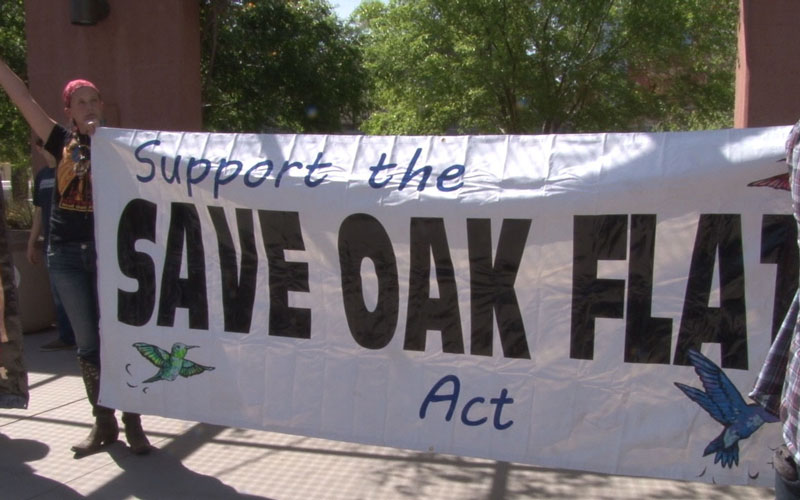As thousands of people lined up around the Phoenix Convention Center Tuesday afternoon to hear presidential candidate Bernie Sanders speak, they could hear the constant beat of drums outside.
Read more:
Trump draws thousands to otherwise calm Fountain Hills
Trump protesters shut down Shea Boulevard in attempt to impact campaign rally
Trump Fountain Hills photo gallery
Arizona ready for unexpected at Trump rally
Ted Cruz, GOP supporters rally in Phoenix ahead of Tuesday election
“We’re here to support Bernie Sanders because he introduced a bill to repeal that land exchange,” said Duke Romero, from the Apache Stronghold, a group dedicated to fighting a proposed copper mine on the Oak Flat campground.
Resolution Copper Mining, owned partly by Rio Tinto, has plans to start digging for copper in an area that activists consider sacred to the San Carlos Apache Tribe near Superior.
“It’s important that our indigenous relatives get out and vote to protect their lands now, those lands are now up for grabs,” Romero said.
It’s just one issue important to the Native American community that has cropped up this election cycle. The Sanders camp has courted the Native American vote, speaking to a crowd of thousands at the Twin Arrows Navajo Casino Resort near Flagstaff Thursday night.
Tribal officials told the crowd that Sanders was the first presidential candidate to visit their land, according to the Associated Press. “The Native American people have been lied to, they have been cheated, and negotiated treaties have been broken,” the AP quoted Sanders as saying. “We owe the Native American community so much.”
There are 186,000 eligible Native American voters in Arizona, according to the Pew Research Center. That’s about 4 percent of the total voter population in the state.
But it’s unclear how much support from the Native American community could move the needle.
“You know, we can look a little bit to Oklahoma, which obviously has a large Native American population,” said Barrett Marson, CEO of Marson Media. “Bernie Sanders did well there.”
Marson’s public relations firm partnered with public affairs consulting firm MBQF to survey more than 730 people statewide in late February to gauge support for the top two Democrat candidates. The poll, which had a margin of error of plus or minus 3.6 percentage points, indicated former Secretary of State Hillary Clinton grabbed 56.2 percent of the votes from the people surveyed by telephone.
Marson said tracking the opinions of Native Americans presents certain challenges.
“It is often times hard to break out Native Americans in polls,” he said. “It’s not very easy for polls to get into that community to get their numbers.”
Although Sanders has publicly wooed the Native American vote, it’s unclear how voters will cast their ballots on Tuesday.
“I’m not so sure. Across the board, I think there is just as much or if more support for Hillary,” said Kurt Luger, a member of the Cheyenne River Sioux Tribe.
Media organization Voice of America reported that only Clinton and Sanders have made mention of Native American issues on their campaign websites. “None of the Republican presidential campaigns responded to VOA requests for comment on whether they were reaching out to Indian Americans,” according to the media site.
The article noted that it’s not unusual for presidential candidates to overlook Native Americans: The group makes up a relatively small portion of the population, tend to vote at lower rates than other minorities and live in states perceived as less critical to the primary election process.
Cronkite News reporter Jessica Swarner contributed to this article.
